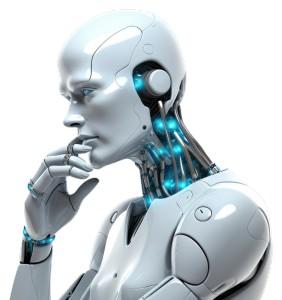1. What Is Automotive AI — and Why It Matters in Dealerships Today
Automotive ai refers to the integration of artificial intelligence across dealership operations—from lead engagement to service reminders and marketing personalization. A leading example is BDC.ai, which automates calls, texts, emails, appointment-setting, hot transfers, and CRM updates, all in real time, 24/7/365 .
In an age where consumer expectations have shifted—where shoppers now demand round-the-clock responsiveness and tailored communication—dealerships that adopt AI gain a distinct advantage over competitors relying on manual processes
2. Core Capabilities of Automotive AI in Action
2.1 Lightning-Fast Lead Response
Responding within 5 minutes increases contact rates by 100×, yet only ~10% of dealerships achieve this without AI . BDC.ai guarantees sub-1-minute replies for inbound sales and service leads
2.2 Omnichannel Engagement
AI agents manage voice calls, texts, emails, and chats, updating CRM systems in real-time to keep staff informed
2.3 Personalized Customer Interactions
Using CRM data—previous interactions, viewed vehicles—AI agents tailor communications:
“I saw you were interested in the Outback; would you like to book a test drive?”
Personalization fosters engagement and boosts conversion probability
2.4 Intent-Driven Voice AI
BDC.ai’s phone agents identify caller intent, hold natural conversations, and hot-transfer when a customer is ready—at minimal cost
2.5 Smart Lead Scoring & Routing
AI analyzes prospect behavior to rank their likelihood to convert—helping dealers deploy staffically on high-value opportunities
2.6 Automated Scheduling & Follow-Up
AI books appointments, sends confirmations and reminders, and handles rescheduling—all on its own, freeing team members to focus on meaningful customer calls .
2.7 Analytics & ROI Insights
BDC.ai surfaces data on lead source performance, show rates, response times, and CRM hygiene—enabling data-driven decision making .
3. Proven Results with Automotive AI
Dealerships using AI-powered BDCs report consistent improvements:
| Metric | Improvement Range |
|---|---|
| Lead response time | 30–50 % faster |
| Appointment show rates | +20–35 % |
| Sales conversion | +15–25 % |
| Manual follow-up efforts | –40 % |
Significantly, many dealers doubled showroom traffic within just 14 days
4. Beyond Sales: AI in Service & Maintenance
4.1 24/7 Service Engagement
Roughly 40 % of service leads arrive outside business hours. AI ensures no inquiry goes unanswered, enhancing trust and reducing frustrating delays .
4.2 Predictive Maintenance Outreach
AI identifies vehicles due for service or recalls, sending proactive reminders and booking appointments—reducing bay downtime by 20–30 %
4.3 Service Workflow Streamlining
Whether handling a service inquiry or a scheduling-up request, AI voice and messaging providers can complete the task or transfer calls intelligently .
5. Marketing with AI: Smarter, Scalable, Personalized
AI is helping dealerships refine marketing strategies in several ways:
-
Personalized Campaigns: Segment by purchase history or levels of interest
-
Chatbots: Available 24/7, driving engagement on the website .
-
Dynamic Pricing: Real-time inventory and demand analysis helps match competitor prices
-
Image Recognition: Automatically generates vehicle descriptions and organizes digital listings
-
Virtual Showrooms & VR: Drive-through digital experiences meet technological expectations of 64 % of shoppers
6. Dealer Insights: Praise & Caution from the Field
On dealer forums, users report:
“AI‑Powered Listings… generate descriptions, edit photos… Smart Lead Management… book test drives.”
Yet more cautious voices observe:
“Customers can sense … scripted or robotic replies… Human connection is the core.”
“It only makes sense for big-volume dealers.”
The consensus: AI is powerful for scale—but essential human touch remains irreplaceable.
7. Achieving the Ideal AI–Human Hybrid
-
AI should handle lead capture, quick responses, scheduling, follow-up, common FAQs.
-
Humans should focus on sales consultations, high-stakes deals, emotional inquiries, and building relationships.
This blend delivers speed and authenticity.
8. The Next Frontier in Automotive AI
Emerging trends to watch:
-
Voice Sentiment Analysis – AI that detects tone and adapts response or escalates emotionally charged calls
-
Image-Based Inventory Matching – Enable prospects to upload photos to find matching stock .
-
Generative AI Sellers – Automated, personalized message generation for outreach .
-
Real-Time Pricing Engines – Dynamic price adjustment based on market signals
-
Integrated Vehicle Connectivity – AI in cars signaling service needs directly to dealerships
9. Implementing Automotive AI: A Roadmap
Step 1: Audit
Map your current lead and service workflows—pinpoint bottlenecks.
Step 2: Set Goals
Define targets: e.g. < 60 s response, +25 % show rate, +20 % service bookings.
Step 3: Select Provider
Consider BDC.ai for core BDC operations; Stella or Podium for ancillary channels
Step 4: Integrate Systems
Link CRM/DMS, telephony, email/SMS, calendar, and inventory feeds.
Step 5: Launch Pilot
Focus on one area (e.g. sales leads, service reminders), monitor KPIs, capture feedback.
Step 6: Refine & Scale
Iterate messaging, update workflows and expand to full coverage.
Step 7: Ongoing Optimization
Use built-in analytics to adapt strategies and optimize ROI.
Automotive ai is no longer a futuristic concept—it’s a present-day reality crafting more efficient, personalized, and data-driven dealership operations. Solutions like BDC.ai revolutionize speed, consistency, and insight.
But the ultimate differentiator remains human authenticity. Automotive AI succeeds when it amplifies human strengths—not replaces them.
